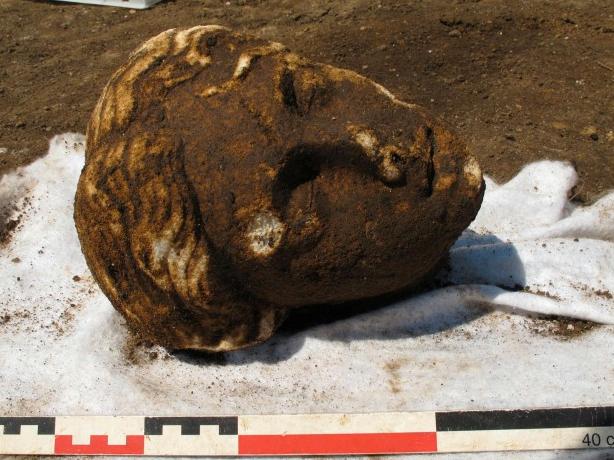Archaeologists have discovered an “exceptional” group of sculptures dating to the 1st century BC in a villa in the outskirts of Rome.
The seven sculptures date to the Augustan age, 27BC to 14AD, and are more than 6 feet high. They were found in an ancient villa in the suburb of Ciampino that was owned by Roman general Marcus Valerius Messalla Corvinus, a patron of the Roman poet Ovid. Various fragments were also found that experts say can be reassembled
The sculptures tell the story of the Greek myth of Niobe and the Niobids, which figured in Ovid’s epic poem, the ‘Metamorphoses’ published in 8AD. Mother to 14 children known as the Niobids, Niobe boasted about her fertility to the Leto, mother of the twins Apollo and Artemis. The twins then killed all of Niobe’s children. Devastated, Niobe fled to Mount Sipylus in modern-day Manisa, Turkey where she turned to stone as retribution for her prideful hubris. However, as she continued weeping, water began to pour from her petrified form. The mountain’s so-called ‘Weeping Rock’ has a limestone rock formation that resembles a female face through which rainwater seeps.
‘La Repubblica’ reported that the archaeologists found the sculptures last summer. They found a bathing area with fragments of mosaics and an outdoor swimming pool with blue painted walls at the villa. The sculptures were found in the pool. Experts suggest that the sculptures surrounded the pool but were buried by an earthquake in the 2nd century AD to lay undisturbed for centuries.
Scientific director of the excavations Alessandro Betori told ‘La Repubblica’: “The sculptures provide us with new evidence about the iconography of Niobe. Two young male figures in the group stand out, caught in the act of observing the slaughter of the brothers... moreover, the villa they come belonged to Messalla, Ovid’s patron. It’s no coincidence that the most vivid description of the Niobe myth is in his masterpiece, ‘Metamorphoses’. As a regular visitor... maybe the poet got to see the Niobids group in all its splendour and remained inspired.”









